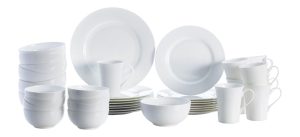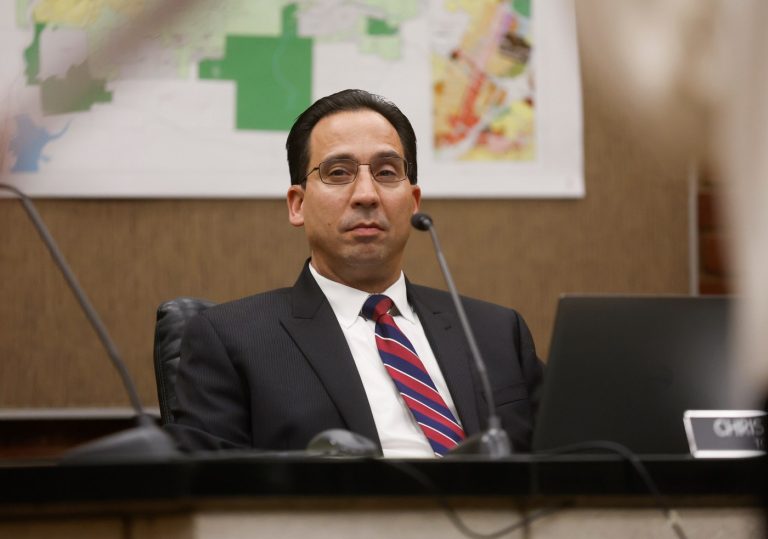Whether you travel for business, pleasure or both, chances are pretty good that you’ll pack at least some tech gear. Most people carry a smartphone, but many also tote a laptop, a tablet and listening device such as headphones or earbuds.
Related Articles
Magid: EV shoppers finally have plenty of choices
Magid: These days we often replace rather than repair
Magid: Beware of scams when shopping
Magid: Tech can sometimes be too complicated
Magid: Satisfying my obsession with label makers
Plugging in
One thing I always carry is an extension cord. Nothing fancy, just a simple two-prong 6-foot cord like you can buy almost anywhere. It’s particularly handy in hotels where the outlet may not be right where you want to plug in your gear, but sometimes I need it because the only nearby outlet is behind a nightstand. It also gives you at least two outlets. There are three outlets in a standard cord, but two large plugs, like smartphone or laptop chargers, may block an adjacent plug, If I have a lot of gear, I might also bring along a second cord or a small travel power strip that typically has multiple outlets and, often, two or more USB plugs. For travel gear, I try to avoid plugs with three prongs, but be sure you have an adapter if you need it.
If you have more than one USB device or if you and a travel partner each have a phone, it makes sense to consider a USB charger with multiple outlets. I’m now carrying a USB charger with two USB A ports and 3 USB C ports. Many newer devices, including most smartphones, now use USB C, although many of us still use devices with the older and larger USB A port.
Cables have a nasty habit of getting tangled up in your travel case. I often put mine in plastic pill bags that are just big enough for a cable. Another option is a braided magnetic cable that stays neatly wrapped around itself when not in use. I bought one on Amazon for about $20.
If you’re going to be away from electrical outlets all day, it’s a good idea to carry a portable power bank, unless you’re confident that your phone’s battery will last all day. But be aware that navigation apps such as Google Maps use extra energy when they’re running, so a phone that typically lasts all day might not if you’re using it to navigate around an unfamiliar area. Before traveling where cell service may be weak, it’s a good idea to download the Google map for the area you’ll be in.
Navigation and entertainment
Speaking of navigation, here’s a Google Maps trick you may not be aware of when using it for walking directions. Once you start the walk, you’ll see the live view icon, which looks like a teardrop surrounded by four curved lines. If you click on it and aim your camera at a building or sign, it will show you an arrow indicating which way to walk. It’s not perfect but it usually works well.
When I fly, I usually carry a small tablet. Before I leave, I download movies and TV shows from Amazon Prime and Netflix, which allow subscribers to download some, but not all, content for offline viewing. I also have a small stand to prop the tablet on the tray table. Sometimes I watch movies on the seatback screen. Most wireless headphones come with a cord to plug into the airline headphone jack, but if you have Bluetooth earbuds, you’ll need a little airline adapter (typically about $30) that plugs into the headphone port and transmits the audio via Bluetooth.
If you travel on business, I recommend a light-weight laptop like a MacBook Air or Asus Zenbook or several models from HP and Lenovo.
Non-tech items
Some of the other things I try to carry along include a small flashlight, which is useful on the plane, especially if you don’t have your phone handy to use as a flashlight. I also carry a travel size bottle of baby shampoo to use for a variety of purposes, including washing clothes in the sink. Ziplock bags are handy for many things. The jumbo ones are big enough to pack a suit, which minimizes wrinkles. I also carry smaller zip lock bags and a lightweight nylon backpack on the plane and when I go out during my trip.
Facebook friends and followers weigh-in
I asked my Facebook friends and followers what they like to bring and got several suggestions, including a bright light bulb for dark hotel rooms, small electric teapot, small first aid kit, variety of foreign power adapters, slippers for the airplane, mini-umbrella, portable water filter, lightweight wool shawl for cold airplanes, candy to give to flight attendants, small bills for tips, AirTags or other trackers for luggage, Covid test kits, Paxlovid and antibiotics.
Handy apps
Apple or Google Wallet can be very handy for your credit cards and other documents. I also have pictures of my passport, driver’s license, eye-glass prescription and other essential documents on a cloud storage system with a link on my phone. I have apps from my preferred pharmacy and health care provider with prescriptions and other health information and have apps from the major airlines I use as well as my preferred online travel site. When outside the country, a currency converter app helps know what things cost in dollars. I also have my credit card app handy so I can verify the accuracy of transactions, including currency conversion, and I always ask them to charge me in local currency to avoid extra conversion fees.
Comcast, DirecTV and YouTube have apps that allow you to watch your shows while traveling, but if you’re outside the U.S., you might need a VPN service to watch them. I also download my favorite music to my Spotify app so I can listen when I’m in the air or otherwise offline.
Related Articles
Microsoft pays more than $300 million to buy its Silicon Valley campus
Can movie theaters survive in the Bay Area?
Future of Google search rests with judge who will strip away monopoly power
Tiny homes housing vs. jail diversion sparks a fresh round of neighborhood outrage in San Jose
PG&E bills head higher again — but earlier decreases ease sting
Larry Magid is a tech journalist and internet safety activist. Contact him at larry@larrymagid.com.












